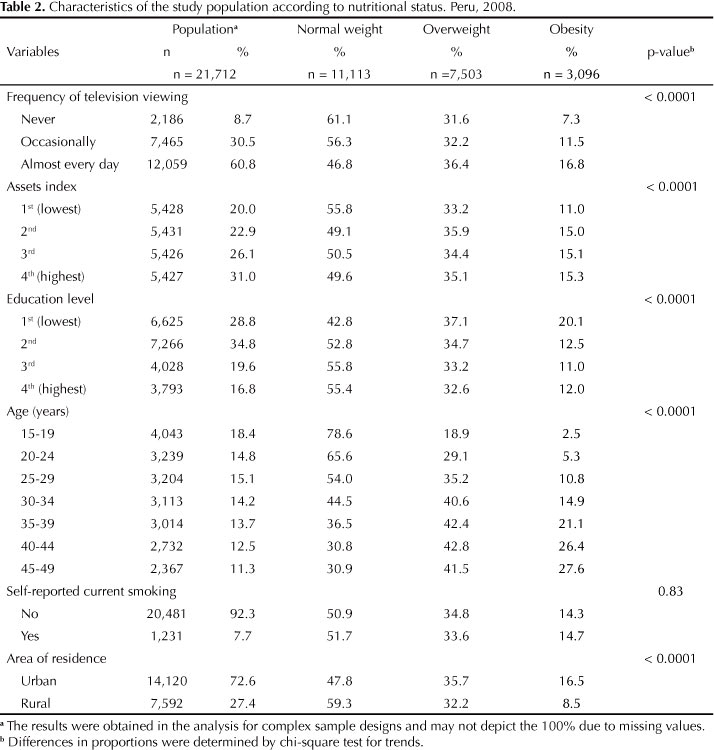OBJECTIVE: To assess the association between frequency of television viewing, overweight and obesity in a nationally representative sample of Peruvian women. METHODS: Secondary analysis of the Demographic and Health Survey 2008 including women aged from 15 to 49 years old. The outcome variables were obesity (body mass index >30 kg/m²) and overweight (body mass index >25 but <30 kg/m²) whereas the exposure variable was frequency of television viewing (never, occasionally, almost every day). Logistic regression taking into account the multistage study design and adjusting for potential confounders was used. Results were presented as adjusted odds ratios (aOR) with 95% confidence intervals (95%CI). RESULTS: A total of 21,712 women were included in the analysis. The prevalence of overweight was 34.7% (95%CI 33.8%;35.7%), and obesity prevalence was 14.3% (95%CI 13.6%;15.1%). Compared to women who never watched television, those who reported watching television occasionally and almost daily were more likely to be obese: aOR 1.7 (95%CI 1.3;-2.3) and aOR 2.6 (95%CI 2.0;3.5), respectively. The magnitude of this association was lower for overweight: aOR 1.2 (95CI 1.3;2.3) and aOR 1.6 (95%CI 1.1;1.4), respectively. The strength of the association was greater in urban areas. CONCLUSIONS: Frequency of television viewing was associated with overweight and obesity in Peruvian women and the strength of this association varied by area of residence. These findings can provide input to strategies for obesity prevention in the Peruvian context.
Women; Obesity, epidemiology; Sedentary Lifestyle; Television, utilization; Health Surveys



